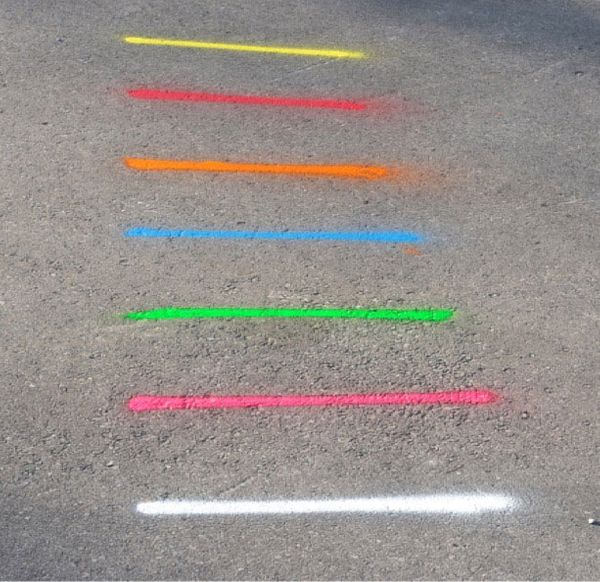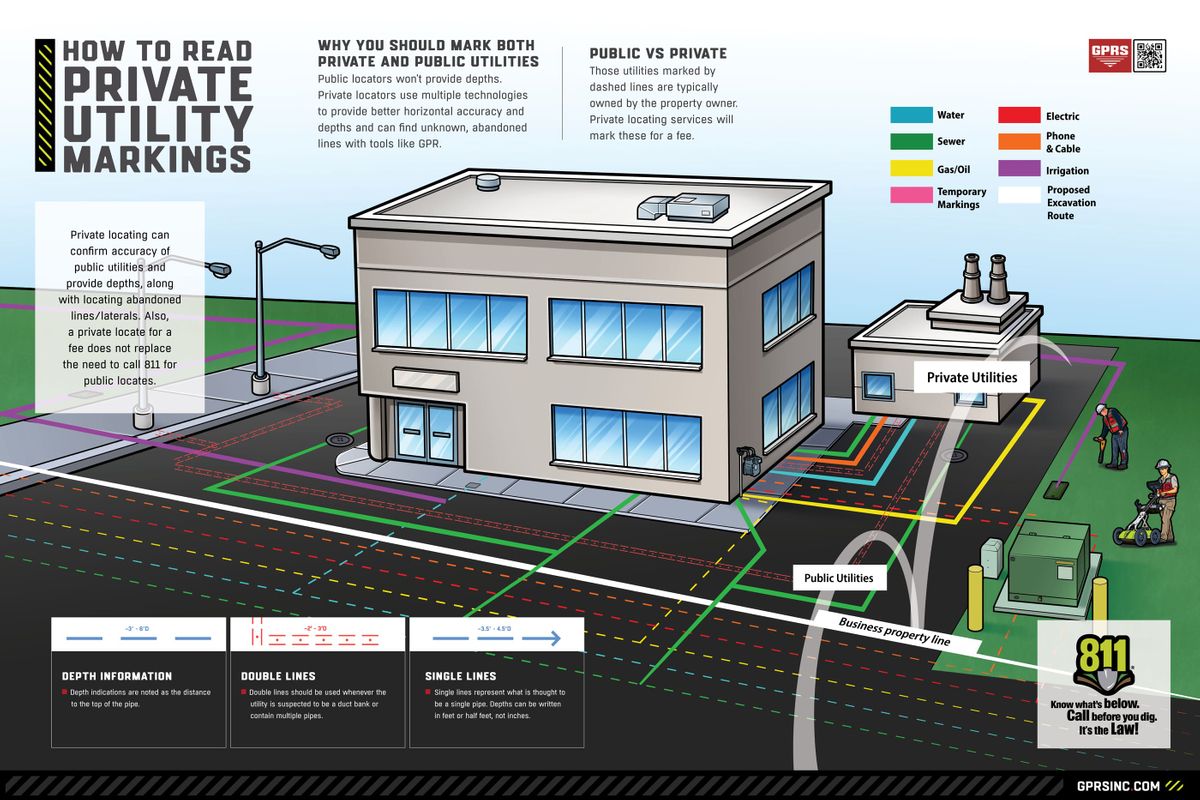A System that Saves Lives
What do the Utility Markings Colors Mean?

Utility Marking Colors Displayed
Construction crews across the nation identify underground infrastructure such as water, sewer, and gas/electric lines by marking the ground with different colored markings. It is essential to use appropriate colors to mark utilities, which is why the 811 One Call hotline system has implemented specific color codes for marking all utility locates nationwide.
Calling before digging is mandatory by law, and checking the meaning of each color marking on public property ensures wise decision-making. At GPRS, our ground penetrating radar (GPR) technology, Video (CCTV) Pipe Inspection, and precision concrete imaging/scanning provides peace of mind by confirming the location of public utilities and locating lines on private property.
What is the APWA?
The American Public Works Association (APWA) is the representative voice for public works professionals, as well as private sector entities serving public works. It is a valuable information source relied upon nationwide and is responsible for establishing national guidelines for marking private or public properties when locating utility systems.
Through “Uniform Temporary Marking of Underground Facilities,” APWA recommends specific color codes for temporary survey markings, excavation sites, and the location of underground facilities. The utility companies follow these guidelines and mark the site using a sequence of color codes including White, Pink, Blue, Green, Yellow, Orange, Red, and Purple shades to identify respective cables.
With GPRS' nationwide network of Project Managers adhering to the APWA standard, our partners in safety can confidently observe our markings. Rest assured, we comply with the highest industry standards and prioritize safety.
To answer any questions you may have about what each utility color marking represents, you can review the FAQ below:

What does a yellow utility flag stand for?
A yellow utility flag stands for natural gas and oil, steam, petroleum, or other gaseous or flammable materials.

What does a red utility flag stand for?
A red utility flag stands for electric power lines, cables, or conduit, and lighting cables.

What does an orange utility flag stand for?
An orange utility flag stands for phone and telecommunication lines, alarm or signal lines, cables or conduits, and fiberoptics.

What does a blue utility flag mean?
A blue utility flag stands for potable (drinking) water.

What does a green utility flag mean?
A green utility flag stands for storm and sanitary sewers, drainage facilities, or other drain lines.

What does a purple utility line stand for?
A purple utility flag stands for reclaimed water, irrigation, and slurry lines.

What does a white utility flag mean?
A white utility flag means pre-marking of the outer limits of the proposed excavation or marking the centerline and width of proposed lineal installations of buried facilities (proposed excavation limits or route).

What does a pink utility flag mean?
Pink utility flags are for temporary survey markings, unknown/unidentified facilities.
GPRS follows these nationwide guidelines so that we keep your job site on budget, on time, and safe, protecting you from the dangers of subsurface utility strikes. To learn more about how you can better protect yourself and your job site from the dangers of utility strikes, visit https://www.gp-radar.com/services/utility-locating-services.

Private vs. Public utility lines with color markings explained.
